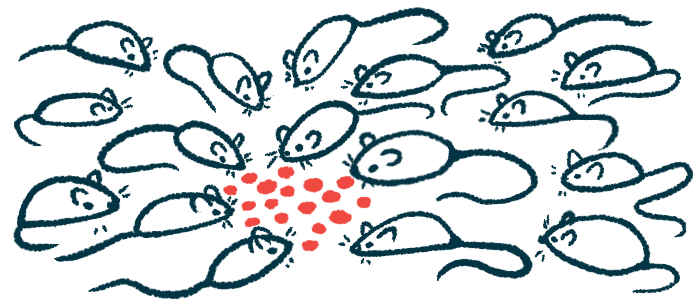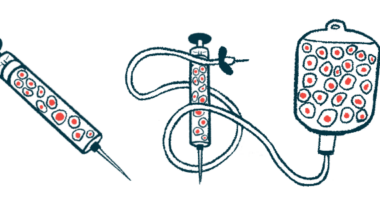Pausing mice’s movement may shed light on motor symptoms
Activating specific brain cells results in total halt in animals' movement

Activating a specific group of nerve cells in the brain leads to a sudden and total halt in movement in mice, a study shows.
Since freezing and slowed movement are common motor symptoms of Parkinson’s disease, scientists think these nerve cells may play a role in the condition.
“Motor arrest or slow movement is one of the cardinal symptoms of Parkinson’s disease. We speculate that these special nerve cells … are overactivated in Parkinson’s disease. That would inhibit movement,” Ole Kiehn, MD, a professor at the University of Copenhagen, Denmark and co-author of the study, said in a news release.
While the study, “Pedunculopontine Chx10+ neurons control global motor arrest in mice,” was focused on understanding the function of these cells in non-disease conditions, the findings “may eventually help … understand the cause of some of the motor symptoms in Parkinson’s disease,” Kiehn said. It was published in Nature Neuroscience.
The brain’s ability to coordinate movement is a complicated process. To execute a well-coordinated movement, the brain must be able to control when the movement starts, how long it lasts, and when it stops, all with extreme levels of precision. The precise mechanisms that control movement in the brain remain poorly understood.
Here, the researchers identified a specific group of neurons (nerve cells) in a part of the brain’s pedunculopontine nucleus (PPN), which helps coordinate movement. These neurons expressed a protein marker called Chx10 and produce the chemical messenger glutamate.
‘Like setting a film on pause’
They used a technique called optogenetics, where neurons are engineered so they’ll activate in response to a specific type of light, to test their function. When the Chx10-positive neurons were activated, the mice froze, their movement stopped, and they even paused their breathing and lowered their heart rate.
“There are various ways to stop movement. What is so special about these nerve cells is that once activated they cause the the movement to be paused or freeze,” said Kiehn, who described the change as “like setting a film on pause. The actors movement suddenly stop on the spot.”
When the neurons stopped being activated, the mice resumed their movements — sort of like hitting “play” on a paused video.
“This ‘pause-and-play pattern’ is very unique; it is unlike anything we have seen before. It does not resemble other forms of movement or motor arrest we or other researchers have studied. There, the movement does not necessarily start where it stopped, but may start over with a new pattern,” said Haizea Goñi-Erro, PhD, a co-author of the study who worked on the research as a graduate student in Kiehn’s lab.
The type of freezing induced by activating the Chx10-positive neurons was distinct from the way mice and other animals will freeze when they’re frightened.
“We are very sure that the movement arrest observed here is not related to fear. Instead, we believe it has something to do with attention or alertness,” said Roberto Leiras, PhD, study co-author and professor at the University of Copenhagen.
Findings may make deep brain stimulation more effective
Previous studies in people with Parkinson’s disease have used deep brain stimulation (DBS) — a surgical intervention that delivers electrical stimulation to specific brain regions — to target the PPN, the area of the brain where these neurons are found. Targeting the PPN in this way has helped ease motor symptoms in some cases, but not others.
These new findings may help explain this discrepancy, since the Chx10-positive neurons are mainly found in the part of the PPN that’s toward the front of the body. They speculated that DBS of the PPN might be more successful if it specifically targets the back part. This may avoid activating the neurons that induce freezing while activating other neurons in the PPN that stimulate movement.
“It is likely that a successful approach for deep brain stimulation targeted to the PPN to alleviate [Parkinson’s] locomotor dysfunctions should avoid the rostral [front] part of the nucleus to prevent the engagement of the Chx10+ population,” the researchers wrote, noting the findings offer insight into how the brain controls movement. Better understanding these processes could aid in understanding motor problems in Parkinson’s, they said.







